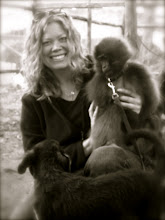When I dreamed about a safari I only ever thought of the wildlife we’d be seeing and not the opportunity to interact with the people who also call this paradise home. The Masai are a beautiful people…lithe, dignified, colorfully adorned, and welcoming. Over the course of the week, we had an opportunity to visit a Masai village and school, dance with Masai warriors, and help support a local women’s art and craft cooperative.
Did you know:
-Young warriors try to impress the local girls by winning the jumping contest (vertical jumping…it’s impressive to watch!)
-For the Masai, the number of cattle one owns equates to one’s wealth.
-Traditionally, the Masai are nomadic people who follow the grass and water needed to sustain their large herds of livestock
-That this is the first generation of Masai to live in settlements. We have the Masai to thank for the establishment of the Masai Mara National Reserve—a place where the king of beasts and other magnificent creatures are protected and available for the world to see.
-Historically, the Masai diet consisted only of milk, meat, and blood. Recently, development organizations have introduced gardens and veggies are beginning to populate the dinner plate.
-Masai men and women are missing their bottom, middle tooth. Both the baby tooth and adult tooth is pulled in order to provide access for “tube feeding” in case of severe illness and is also considered a sign of beauty.
-Masai villages consist of a double circle. The outer perimeter consists of a dozen or less circular huts that protect an inner, circular perimeter where the livestock are kept overnight.
Did you know:
-Young warriors try to impress the local girls by winning the jumping contest (vertical jumping…it’s impressive to watch!)
-For the Masai, the number of cattle one owns equates to one’s wealth.
-Traditionally, the Masai are nomadic people who follow the grass and water needed to sustain their large herds of livestock
-That this is the first generation of Masai to live in settlements. We have the Masai to thank for the establishment of the Masai Mara National Reserve—a place where the king of beasts and other magnificent creatures are protected and available for the world to see.
-Historically, the Masai diet consisted only of milk, meat, and blood. Recently, development organizations have introduced gardens and veggies are beginning to populate the dinner plate.
-Masai men and women are missing their bottom, middle tooth. Both the baby tooth and adult tooth is pulled in order to provide access for “tube feeding” in case of severe illness and is also considered a sign of beauty.
-Masai villages consist of a double circle. The outer perimeter consists of a dozen or less circular huts that protect an inner, circular perimeter where the livestock are kept overnight.
 I danced with Masai warriors! How cool is that!?! Three of the six nights we were at camp, the Masai provided us with interactive entertainment before dinner. I love the Masai music and by the end of the week I was singing along.
I danced with Masai warriors! How cool is that!?! Three of the six nights we were at camp, the Masai provided us with interactive entertainment before dinner. I love the Masai music and by the end of the week I was singing along. This warrior, John, was crazy…so much fun. He could make the best animal noises, which I attempted, but failed to replicate.
This warrior, John, was crazy…so much fun. He could make the best animal noises, which I attempted, but failed to replicate. The Masai women we visited
The Masai women we visited Mom standing in front of a Masai hut
Mom standing in front of a Masai hut
Laura, Mom, and I joined the ladies as they sang and danced upon our arrival to their village.
 The women developed an art and craft cooperative and proudly displayed their handiwork. It was hard to not buy one of everything!
The women developed an art and craft cooperative and proudly displayed their handiwork. It was hard to not buy one of everything!
